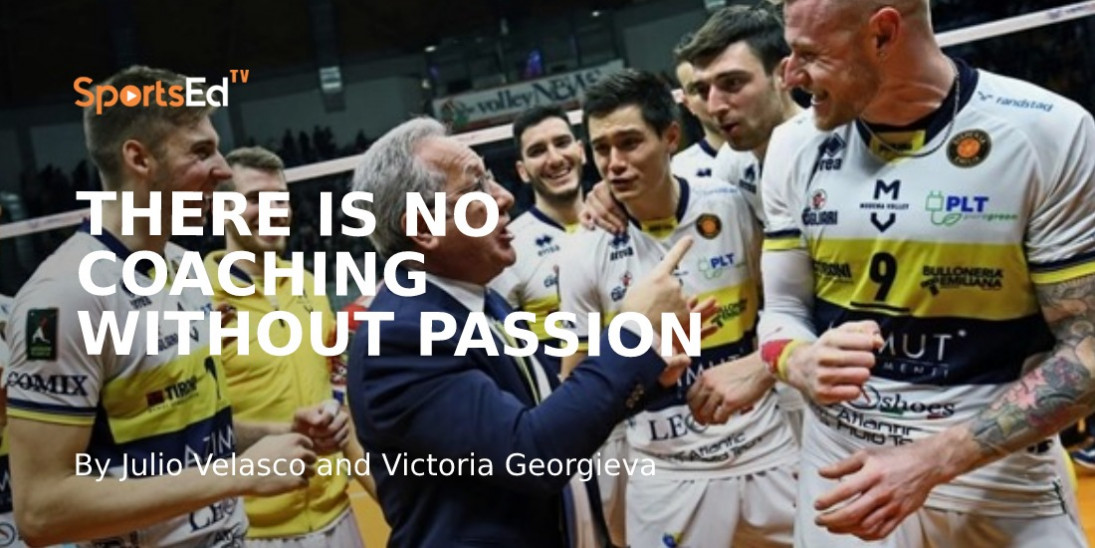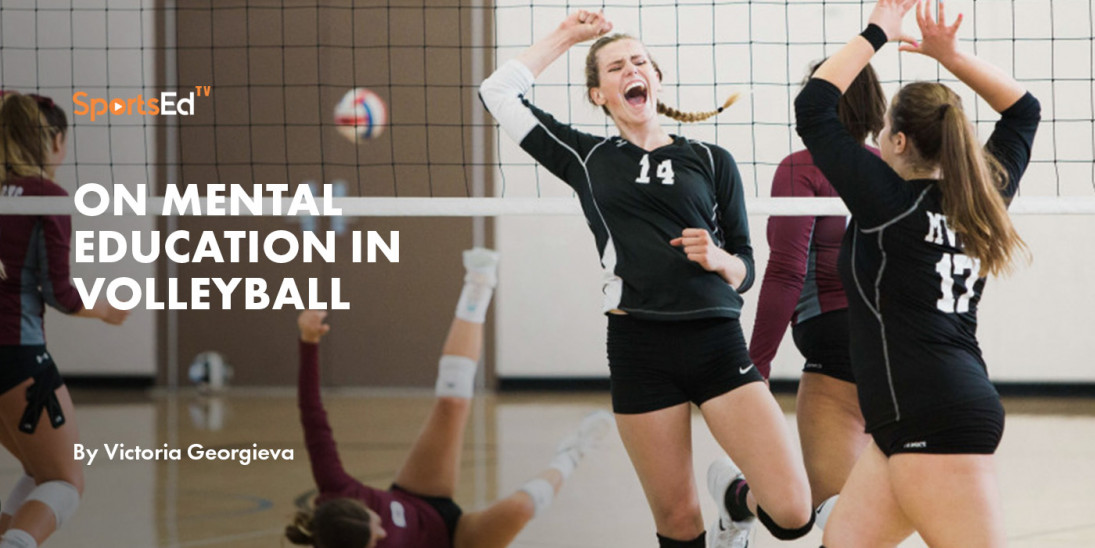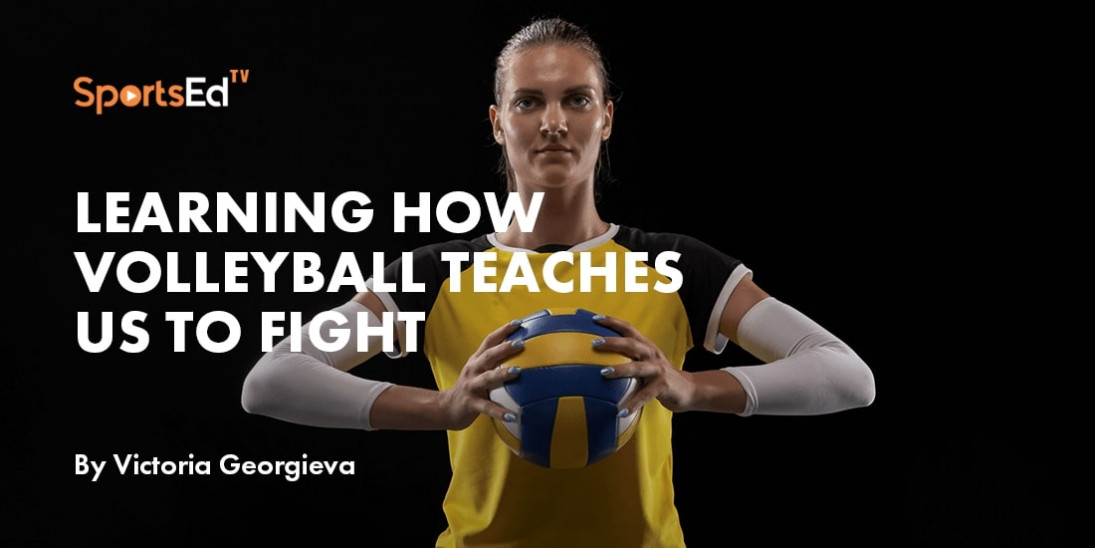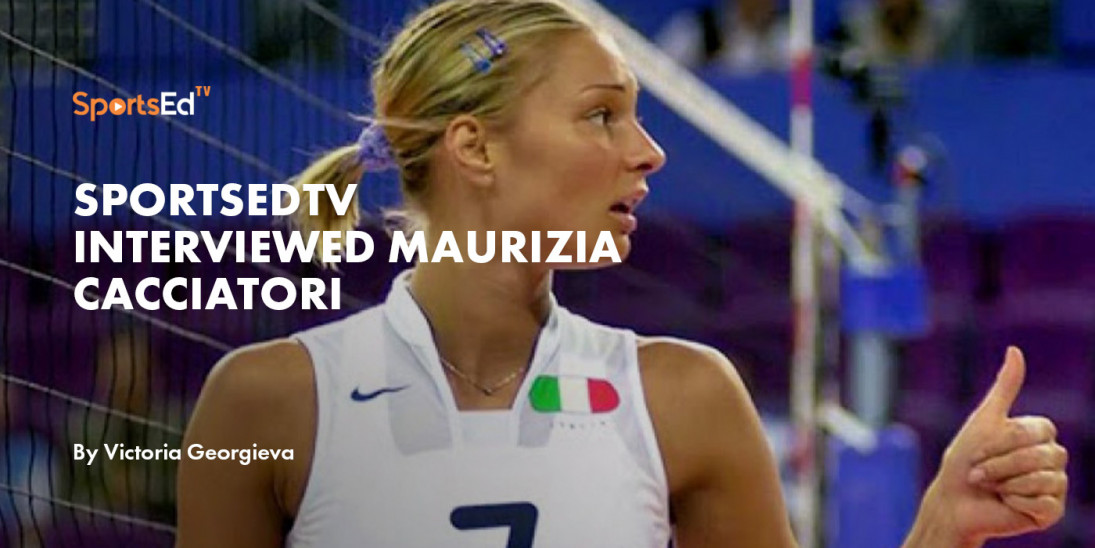Volleyball
Welcome and thanks for visiting...

Rett Larson‘s Secrets of Strength and Conditioning
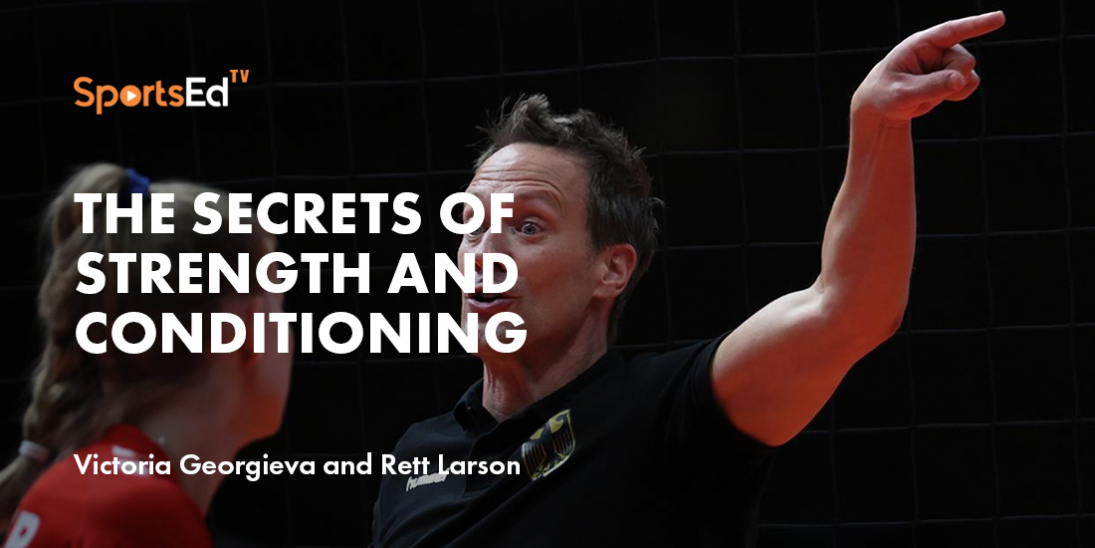
SportsEdTV Volleyball is committed to bringing athletes, coaches, and parents pro-level volleyball education videos for FREE. All levels, anywhere, anytime. Check out our full instructional library and sign up to join our volleyball community!
Imagine this!
You go back to summer 2021, you are a media officer on site, working for the coverage of the Women’s European Championship.
You go to the venue, sit in your place, focused on delivering, and try to find a little time to recharge the batteries before another hectic day. You are tired. Everybody is running around, TV crews, event managers, volunteers.
The teams for the first match arrive.
Suddenly, it’s time for the warm-up. At some point, you hear people cheering, enjoying, and applauding. What you witness is nothing else but the strength and conditioning coach of the German team - Rett Larson, kind of "dancing" on the court, and the girls repeating his movements. What you feel is a great atmosphere. And suddenly, even if you are tired, you are inspired again.
Was it a one-time thing only? No. I would witness that all the days when team Germany would have a game. Of course, it wasn't only me noticing these different warm-ups. Officials, fans, photographers, media, and the opponent teams did too.
However, something was telling me that there is a lot behind this "happy dance on the court". Talking to Rett Larson, an American strength coach who has worked with the legendary Lang Ping of China's women's volleyball team, I realized I was right, and my journalistic instincts haven’t lied to me.
There is much, much more than that. In a conversation that we had especially for the SportsEdTV audience, Larson (previously a coach at the Dutch women’s team as well) opened the doors to the secrets behind, and the positive approach to his job. With more than 20 years of experience, Rett has a lot to share on the importance of the warm-up, the duration of it, the right planning of strength and conditioning training, the positive mindset in the weight room, and not missing out on opportunities.
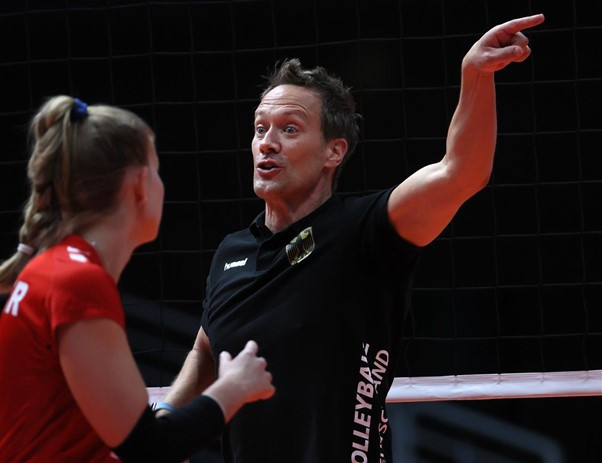
The beginning of his career as a strength and conditioning coach
Rett started his career with young athletes, later moved to elite ones, and eventually, convert himself into a volleyball strength and conditioning coach by “Happy accident”, as he calls it.
His lightly edited remarks follow:
“When I moved on with elite athletes, I was involved in all kinds of sports. I spent seven years working for the Chinese Olympic Programs. Eventually ended up with the Chinese Women’s Volleyball team, and that led me to the Dutch Volleyball team, which led me to the German Volleyball team. And now, just by a happy accident, it looks like I am a women’s volleyball strength and conditioning coach.”
China experience
“When I was working in China, I had gone to the London Olympics with a bunch of different sports. Probably, it was eight different sports that I was working with. It went well enough and I liked China enough, that agreed to stay there, so over the next few years, as Rio was approaching, the women’s volleyball team was looking for a western strength coach. Lang Ping, their head coach had been U.S.coach, and she had seen the benefits of western strength and conditioning. She knew she had to work with the Chinese girls around the clock, crazy hours in volume, so her idea was to get western coaches and physiotherapists to try to keep the players strong enough, so they could withstand all the technical training that they would do. When she went looking for strength and conditioning coaches, I was one of the ones that were there. At the time, there weren't many western strength coaches that have proven that they could do a good job and, certainly, coaches that liked being in China."
The differences between the western and eastern approach
“In China, a dedicated strength coach is a very new profession. For the whole existence of the women's volleyball program in China, it had been just an assistant coach who had them just do some squats, bench press, and push-ups, with no real science behind it. What Lang had seen is that there is an opportunity to not just do the same kinds of exercises regardless of sport, that there was a way to do specific volleyball training. The way volleyball players jump is, for example, a little bit different from the way a badminton player jumps. If you train them all the same way, you might be missing out on something. Also, most of the traditional Chinese way of doing things is high in volume, and the girls are getting more aches and pains than feeling better. So, the western approach was having the physio and strength coaches work together to create strength programs that are helping everybody feel better, by curing injuries, or reducing pains."
The importance of having enough time as a strength coach
“To Lang Ping’s credit, she gave me tons of time with the athletes. Not only could I train them three times a week, but I had the agility to do speed sessions if I want to, she would give me hours; or if I wanted to do regeneration sessions - the same. Before every practice, she would give me 20 minutes to warm them up, so that this became the time that I could do more strength, speed, or shoulder work. I applaud Lang Ping for giving the strength coaches the time to do our job."
Differences in volleyball warm-ups for matches and training
“This is always the part that scares me. A lot of people in the stands will see the warm-ups that I do during the competitions. And they will see some crazy, dancing moves… If you just go to YouTube and see the German or the Dutch team warm-ups, you will mistakenly think that that’s all we do. When in fact, “the dancing” is maybe in the last 30 seconds, one minute of a 13-minutes warm-up. It is designed to be something that leaves the girls after the warm-up to be relaxed, but smiling, to engage their focus because they don't know what crazy dance I am going to come up with. It's a way for me to look a little bit vulnerable and a little bit silly. My philosophy is not taking yourself too seriously, but also with the dancing - we love when it distracts the other teams, and we love when the fans get into it, and they are starting shouting and cheering. Hopefully, we win some fans that way as well. But this is this smaller percentage of our competition warm-up, which goes from the basic stuff that you will recognize in all the warm-ups - getting their bodies warmed up through some movements, some crawling, traditional stretches that you might see. And then we work on the dynamics - get their bodies ready to fire at the speeds that they need to. Along the way of that warm-up, some of it is reactive, I am making them switch directions quickly, and they have to pay attention, they can’t just zone out, and be the zombies going through the warm-up. I think that’s the enemy of a good competition warm-up. I need their brain and their feet, everything prepared. So, it’s about this gradual progression - adding more and more reactive, speedy components, to the last alternation, which is a kind of quick foot reaction drills, put occasionally with a crazy robot dancing that makes everybody laugh and kind of relax a bit before a game. That’s different compared to what I do before training. In training and competition, there's only little of that competition warm-up when they don't know what's coming. Everything else, they know what's going to happen. I don't want it to be stressful for them, to not know what's coming next. In training warm-ups, I am free to program whatever I can that pushes the athletes. I think of the pre-training warm-up as a wonderful time to push the edges of their athleticism in a safe place. "
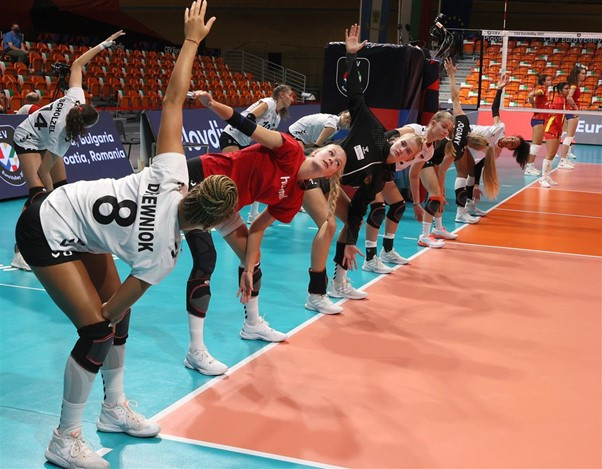
“I am super lucky that also Felix (already ex-coach of the German national women's team) gets it. Kowalski is good, he allows me 15-20 minutes for the warm-up. That enables me to do everything that I want to do - I plan out my week in advance, what I am doing in each of the 20-minutes sessions. If Felix tells me, 'Hey, you know, I am noticing some girls are not moving on the block very well.' Then I will go on my warm-up and say 'Ok, I am going to work on that on my Tuesday session, and Wednesday afternoon warm-up, and Saturday morning warm-up.' I am just going to plug in a bunch of work, that we are doing, cross over -mechanics, maybe using medicine balls, or the girls holding each other’s backs. But that’s the perfect time for me to be able to help the coaches. All warm-up has to do is get you warm and put you through some range motion. The bar is low - get warm. So, instead of doing the jumping jacks, why not work on the thing that my team needs me to work on the most? Or, if I think their shoulders are not strong enough, then we should be doing strength exercises during warm-up. It all gets you warm. If my team is stressed out, then that’s what we need to work on - we need to play it.”
On flexibility and missing out on opportunities
“You need to be flexible. I think that flexibility to the demands of the team that week, that day, is something that many coaches miss. If you are just doing the same thing all the time, you just miss out on the wonderful opportunity to prove to your coach that you are a more integral part of this team, to prove that you understand volleyball, that you can program volleyball. I think that athletes buy it more also when they see that what they are doing is actually, directly associated with volleyball.”
Picking up the right volleyball exercises
“I am sure there are books. But the way that I do it - whenever I get a new sport, it is a process of first going to practices and taking my notes. Maybe I have never played volleyball, but that cross-over mechanic or that jump spin serve - that looks a lot like this, this, and this. And I see how much is happening - for example, do they have to go more than 3-4 steps during a game? So, just making notes like this. I also have this small group of friends strength coaches, and we ping-pong ideas. A lot of it is paying attention to what coaches care about and their way of teaching. Different coaches teach differently, and I want to be speaking the same language as the coach I am working with. We are the same team.”
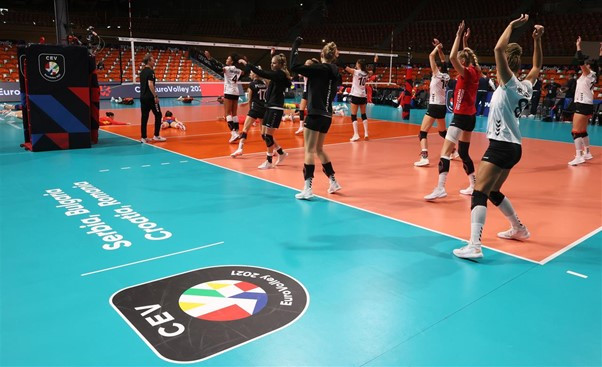
Planning - the bigger picture
And while discussing the right planning for the week, another topic pops up. How do strength and conditioning coaches work with the national team, where the season usually lasts no more than three months?
“You can do your planning, but things are happening meanwhile", we asked Rett. "How do you deal with the pressure and that kind of unexpected situation?
"It's unique because I don't have this great off-season with the athletes, to build and put on all this foundational work. We hit from the ground, and my strength training takes a big back seat to adjust to the goals of the team for the next competition. How important it is? How rested and well do we have to feel? If we are far away from the Olympics, then these are conversations that I will have with the head coach - to say "Hey, do we need to be playing our best at VNL, or can these girls be a little sore and achy, because we are going to have to start building for more significant things at the end?" Sometimes, you have to sacrifice because it is hard to get them as strong as they need to be at the end of the season if you are not going to be a little weakened, but at the same time, we don't want to have big depths, and that's kind of the art. We have to be coordinated on that with the head coach - that I am not decreasing my volume when he is increasing his."
On getting the athlete on the top level for the most important competition
“Knowing how to pick your athletes at the right time is an art. There are so many books that are written about this, there are many different ways to be doing this. If you speak to different strength coaches, they have different ideas. I tend to be pretty simplistic about the way I am doing it - we still lift our heavyweights during our last competition. When we were at the Olympics with the Chinese team, the girls were setting their personal best, but not as many repetitions. The training was faster and heavier.”
Communication with the players
"You want this transparency with the players, and they want it! They will want to know! Once they get to know me, they come over for breakfast and put their hand on my shoulder: “Tell us about the training today. Last week, five sets…”. They are bringing me over some cake, and cappuccino (laughing). They are all excited, they all get excited when the volume drops, and the weight goes up. The girls, the German team, love moving weights. They are like a group of high school boys sometimes - if two plates go on the bar, they want somebody taping them, to show their followers how strong they are."
The right mood in the weight room
"I think it's important that you have a weight room where you kind of celebrate. It should be a place where you achieve, where you are going to do something significant. When that’s over, I want a room where everyone is cheering, everyone is supporting. I want it to be a place where the girls start practicing being badasses. Not where they put their heads down.”
“Once you have this good team culture, that passion, you want to see it everywhere. It’s important to always have the girls pair up, to support each other in the group. I want them to feel supported.”
Are strength coaches psychologists?
“We are all amateur psychologists. I think about it a lot. I think about what programs I can put in the weight room that the girls will feel comfortable with. I am always keeping an eye on or putting my thoughts on how can we get our mentalities right. If we just had a big loss or a disappointing loss to a team that we should have beaten, that could be the time that we just relax. I bring everything down, we need to snap our mindset."
The nightmare of the strength coach
“Ðne of your key players is hurt before an important match because their body wasn’t strong enough to get through it and to withstand all that competition. That’s the nightmare.”
How to avoid injuries in volleyball?
“You kind of put an armor to make sure your body is capable of withstanding this range of motion that’s needed for volleyball. You want to make sure that you have this strength that’s needed to execute all these motions - that your shoulder is extremely strong when you contact the ball, or your legs can withstand the many landings. You need to, to some degree, reprogram the athletes, once they have these bad habits, maybe trying to cure them."
It’s super difficult to cure a bad habit, especially if you don’t have enough time. For example, if you are trying to learn the piano, if you have only five minutes, you won’t be able to...but if you have 20 minutes, maybe you can. The same is in our field - if I have 20 minutes, I can work on the mobility, on strength issue… so that’s super important.”



